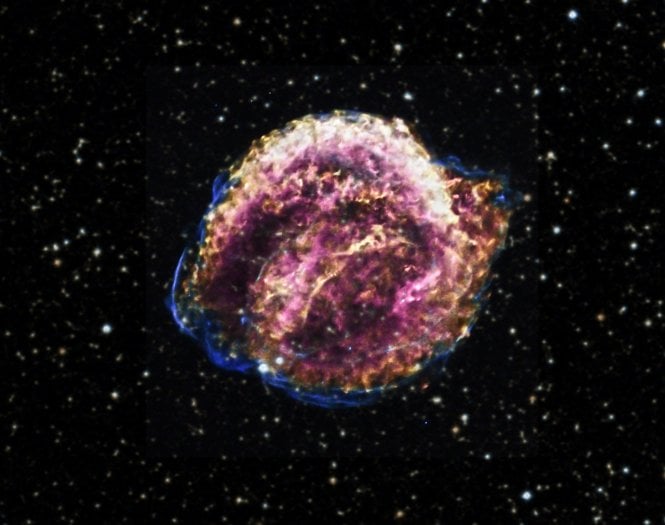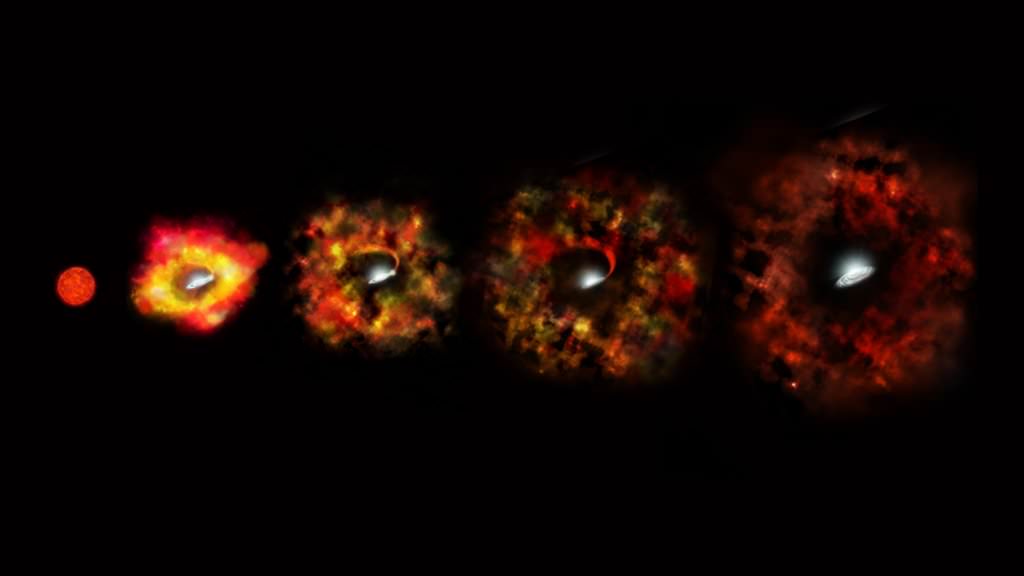When stars reach the end of their lifespan, they undergo gravitational collapse at their cores. The type of explosion that results is one of the most awesome astronomical events imaginable and (on rare occasions) can even be seen with the naked eye. The last time this occurred was in 1604 when a Type Ia supernova took place over 20,000 light-years away - commonly-known as Kepler's Supernova (aka. SN1604)
Given the massive amounts of radiation they release, past supernovae are believed to have played a role in the evolution of our planet and terrestrial life. According to new research by CU Boulder geoscientist Robert Brakenridge, these same supernovae may have left traces in our planet's biology and geology. These findings could have implications given fears that Betelgeuse might be on the verge of going supernova.
The study, titled " Solar system exposure to supernova ? radiation," was published this month in the International Journal of Astrobiology. For the sake of this study, Brakenridge examined tree ring records dating back 40,000 years ago. From this, he was able to conclude that supernovae occurring relatively close to Earth could have triggered multiple disruptions to our climate.
If a supernova were to take place close enough to our Solar System, it would expose Earth to enough gamma-radiation to wipe out our civilization and trigger a mass extinction. But even a distant supernova can take a toll on Earth by stripping its protective ozone layer and inflicting other changes that will disrupt our atmosphere and climate.
Brakenridge, a senior research associate at the Institute of Arctic and Alpine Research (INSTAAR) at CU Boulder, was able to discern the fingerprints of past supernovae. As he described it in a CU Boulder Today release:
"We see supernovas in other galaxies all the time. Through a telescope, a galaxy is a little misty spot. Then, all of a sudden, a star appears and may be as bright as the rest of the galaxy... These are extreme events, and their potential effects seem to match tree ring records. There’s generally a steady amount year after year. Trees pick up carbon dioxide and some of that carbon will be radiocarbon."
Brakenridge's research came down to the presence of carbon-14 in trees. Also known as radiocarbon, this carbon isotope occurs in tiny amounts in nature and is used to determine the age of objects that contain organic material (aka. radiocarbon dating). This isotope is produced regularly from the interaction of cosmic rays with our atmosphere, but the rate at which trees absorb it isn't always consistent.
To test this hypothesis, Brakenridge examined tree ring records dated to the late Quaternary Period (ca. 40,000 years ago to the present). He compared these records with eight supernovae that occurred not far Earth in this time - which scientists are able to study today by examining the nebulae they have left behind. What he found was that all eight supernovae were associated with unexplained spikes in the radiocarbon record on Earth.
Four of these he considered as especially promising, like the supernova that took place in the Vela constellation (about 815 light-years from Earth) roughly 13,000 years ago, which coincides with radiocarbon levels on Earth suddenly increasing by nearly 3%. As Brakenridge explained:
"We’re seeing terrestrial events that are begging for an explanation. There are really only two possibilities: A solar flare or a supernova. I think the supernova hypothesis has been dismissed too quickly. What keeps me going is when I look at the terrestrial record and I say, ‘My God, the predicted and modeled effects do appear to be there.’"
Naturally, there is a margin of error that has to be taken into consideration since scientists still have trouble precisely dating past supernovae. This makes the timing of the Vela explosion uncertain to within 1,500 years. It's also not clear what impact the resulting disruption could have had for plants and animals on Earth at the time.
So while these results are far from conclusive, they do help illustrate how stellar events and the stability of life on Earth are closely related. This extends beyond the Milky Way and includes supernovae in other galaxies, which produce a tremendous amount of gamma-rays that can still reach Earth. While such events are not dangerous to life on Earth on their own, trees on Earth could retain a record of these as well.
This study could also have implications relatively close to home. In recent years, astronomers have noticed some unusual dimming behavior coming from Betelgeuse. This red giant star in the constellation Orion and is 642.5 light-years from Earth - significantly closer than Vela. While opinion is divided on what could be causing this behavior, some astronomers have suggested that it might be on the verge of collapsing.
One can only hope that, given its relative proximity to Earth, Betelgeuse is just sneezing gas clouds or experiencing higher-than-usual sunspot activity. Otherwise, future generations might be examining tree rings from this era and noticing spikes in carbon-14! It might be a good idea to create a dedicated telescope to monitor it regularly.
Further Reading: CU Boulder*, International Journal of Astrobiology*
 Universe Today
Universe Today



